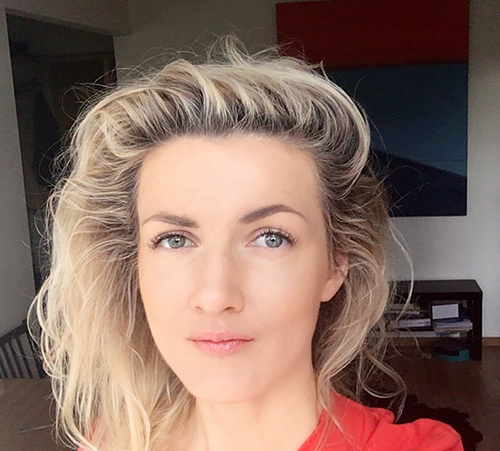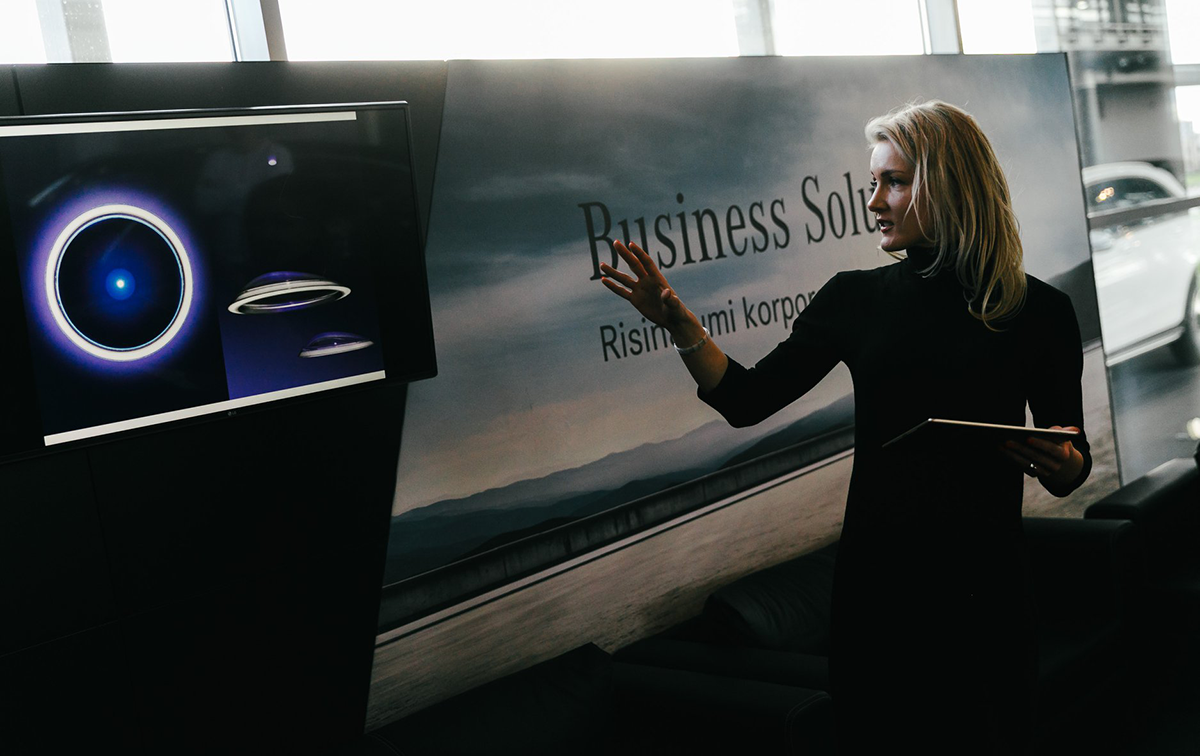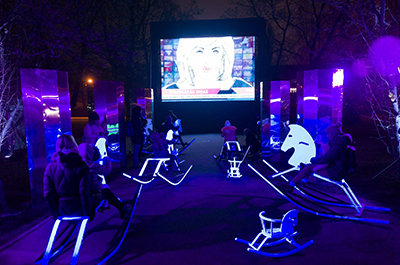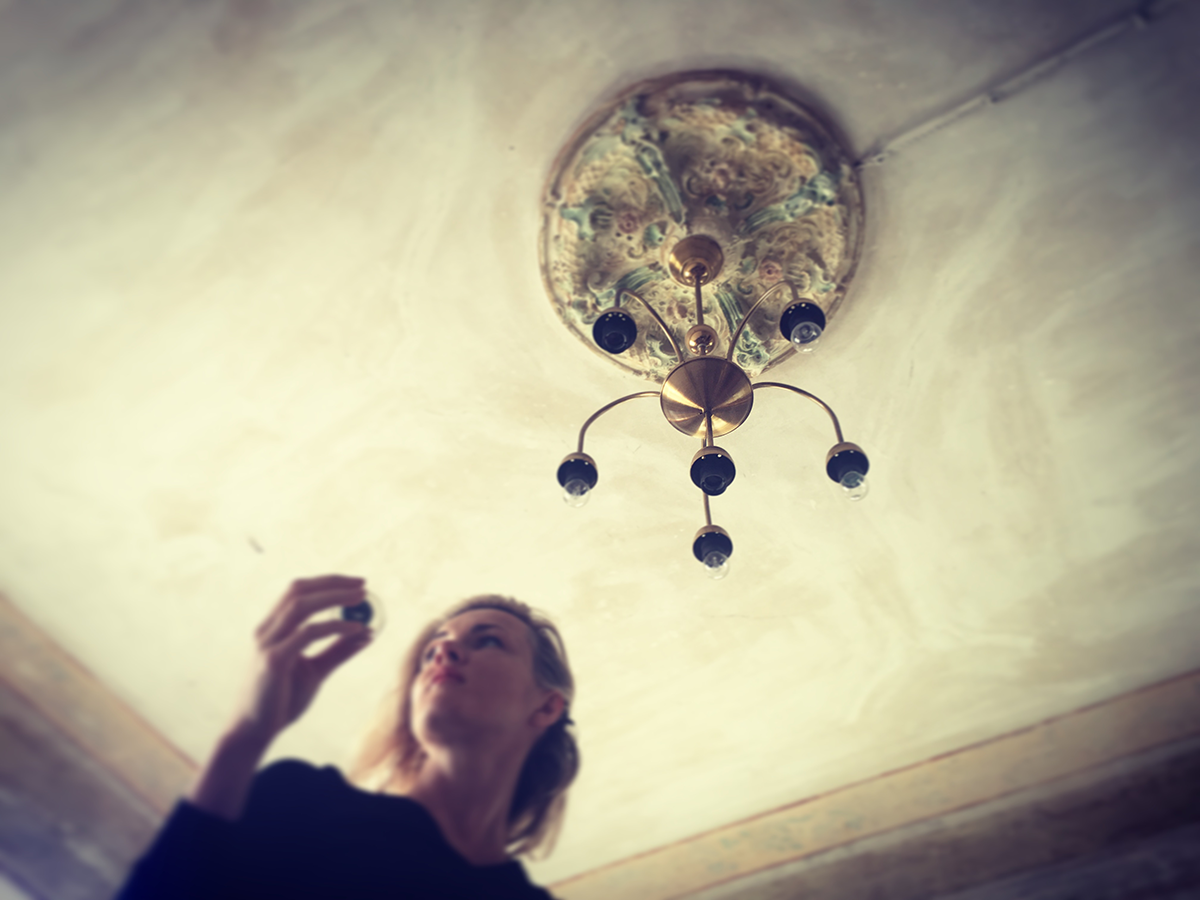Katrina is passionate about light
Katrina Kalnina graduated from the master’s programme in Architectural Lighting Design in 2016. She is now working as a lighting designer in Latvia.

Hi Katrina, what are you working with at the moment?
At the moment, I am working as a Lighting Designer for a Latvian company called Trentini that offers design furniture, lighting, and finishing materials from the world’s leading brands.
What can a regular day look like at your job?
Most of the time, my job is to create lighting projects for private and public indoor and outdoor spaces. This involves communication with clients and/or architects, developing lighting concepts and sketches, doing light calculations, creating technical drawings, visualisations, presenting projects, etc.
Furthermore, I also lecture on lighting for design and architecture students from local universities. To be able to do this, we have created a special space – The Light Study room - where in a short and compact way we can present the main concepts on light – circadian rhythms, terminology, photometry, types of lighting and other elements. Since there are no dedicated light study programmes in Latvian universities, where one can study light in-depth, many young designers/architects lack knowledge of how to work with light in their projects.

Speaking about light is as important a part of my job as creating light projects. Lighting designer is a relatively new profession here and I often have to advocate the benefits of high quality and well-considered lighting as well as the role of lighting specialists in general. Therefore, the third part of my job is to hold presentations and write articles on different topics regarding light.
Have you worked with anything else since you graduated?

Besides working in the lighting office, I have participated at the light art festival Beaming Riga. It is the largest light festival in Latvia, and I have been lucky to be part of it for three years in a row with three different installations.
Why did you choose this programme at KTH?
I chose KTH because I had heard good feedback about the Architectural Lighting Design programme, the studies were in English, and it was a one-year programme, so it was intense but not that long. The fourth reason was that Stockholm is only a one-hour flight from Riga, therefore it was easy to stay connected with my family.
Is there any knowledge you acquired during your studies that has been particularly useful for you in your career?
My background is in interior design and, before KTH, I felt the lack of understanding of how to use lighting in my projects. Only during my studies at KTH did I realize just how many things I had not known before. Of course, I still have to learn, it is a never-ending process, however I would not be able to do what I do know without the knowledge I acquired at KTH.
What were the best aspects of your studies at KTH?
Studies at KTH totally changed how I see light. We had fantastic lecturers and we learnt so much from them. I really appreciate the time and effort they invested in giving us feedback and advice regarding our own work.
Another very positive aspect was the diversity of students from around the world in one group. Everyone had their own experience and knowledge; we could learn a lot from each other, and the group work was for me as educational and as valuable as the lectures.

What would you say to a student thinking of applying for this programme?
It is a great programme for anyone interested in light. It gives very necessary conceptual knowledge on how to perceive light and how to deal with it. Even though the programme is quite intense, one year of studying is not enough to cover all the aspects of lighting design, so be ready to learn many more things (especially technical) by yourself afterwards.
